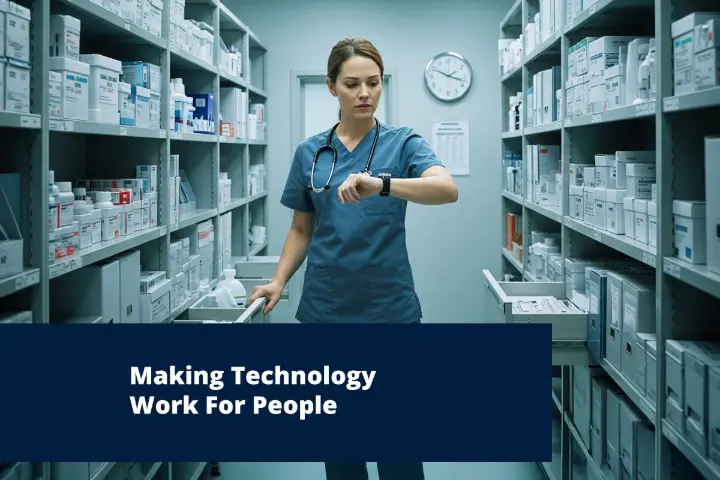Procurement Best Practices from Top-Performing Healthcare Facilities
Medical procurement is an important function that keeps hospitals running, allows doctors, surgeons and nurses to do their jobs and helps patients receive the appropriate care.
Procurement departments need to innovate to make sure they are delivering the best possible options for clinical staff and patients.
There are examples where hospitals and health systems have pulled ahead of everyone else - not necessarily because they’re bigger or have fancier budgets, but because they’ve leaned into practical, sometimes surprisingly straightforward strategies. There’s always something to be learned by studying what others have done well.
Making Technology Work For People
It’s been well discussed in the medical industry that barcoding is supposed to be a game changer in the way the medical supply chain is managed. Barcoding and real time data on inventory can be a powerful tool, when it’s implemented thoughtfully.
At Mercy Health, based in Ohio, they didn’t just stick barcodes on boxes and call it a day. They tied scanning into actual workflows with nurses scanning items as they’re used at the bedside, with data flowing back into the system in real time. This resulted in fewer “Where is it?” moments, and a reduction in stockouts and emergency reorders. Over time, this kind of data can also be used to help facilities adjust their medical inventory strategy to match real use patterns, not just guesses based on historical ordering.
Humanizing the barcoding tech, and making it usable for nurses in real time as part of their routine, not just an admin task to do at the end of a shift, is what made this tech innovation a success for frontline workers and the procurement department.
Similarly, the UK’s National Health Service has adopted GS1 global standards, and mandated the use of barcodes for medical devices and medicines. This initiative has led to recurring annual savings of £3 million to £5 million for a 600-bed acute trust, as reported by McKinsey.
Listening to the Frontline
Hospitals spend a lot of time and effort developing a thorough buying plan for medical supplies, but often the people who actually use the products every day get left out of the conversation.
NYU Langone didn’t make the same mistake. During the early stages of the COVID-19 pandemic, NYU Langone Health's leadership proactively engaged clinical leaders to identify essential items needed for patient care. By looking at 120 different items, which clinical teams anticipated would be most in demand, the hospital was able to make proactive purchases to put it in a better position to deal with the pandemic. This collaboration enabled the supply chain team to make informed purchasing decisions and secure critical supplies, such as exam gloves, IV fluids, catheters, and disinfectant wipes, in anticipation of increased demand.
Optimizing Non-Clinical Procurement Practices
Cleveland Clinic partnered with suppliers to improve procurement practices and benchmarking. The collaboration aims to apply leading practices and benchmarks from non-healthcare industries to healthcare, enhancing efficiency and savings in non-clinical expenditures.
Cleveland Clinic looked at the fact they spend between 20 to 25 percent of net revenue in the non-clinical categories and optimizing this area could deliver more cost and supply chain efficiency savings. Because many of the items and services in this sector are non healthcare specific, bringing in knowledge, expertise and benchmarking from other industries allowed insights into where there was overspending, and how savings could be achieved.
As a result of focusing on this area of spending in the organization, Cleveland Clinic has been able to reduce the non-clinical spend.
Applying the Success Stories
While there’s no single formula for medical procurement optimization and one facility’s success story won’t plug-and-play into another's system, there are useful patterns and successful ideas that can be inspiration for procurement departments to learn from.
Whether it’s smarter barcoding that provides data insights and works for frontline staff, smarter order batching, listening to the feedback frontline staff, or exploring if savings can be made in additional areas of medical procurement, not just on the clinical side. The goal’s always the same: less waste, better care, and fewer urgent orders for missing supplies.
About MAP Medical
MAP Medical helps procurement teams find the supplies they need even when other distributors don’t have access to stock or can’t source hard to find items. With a product catalog featuring over 500,000 products from 3,000 manufacturers, MAP Medical supplies hospitals, acute care facilities, and educational & research labs with high quality products to match their exact requirements and budgets. Fast dispatch and delivery times, along with excellent customer service ensures the medical supply chain runs smoothly without interruption.
MAP Medical is more than just a supplier - we work as a strategic partner to enable every client that works with us to make tangible improvements in cost and time efficiencies. To find out more about how MAP Medical can help you, get in touch with our team today.



Procurement Best Practices from Top-Performing Healthcare Facilities